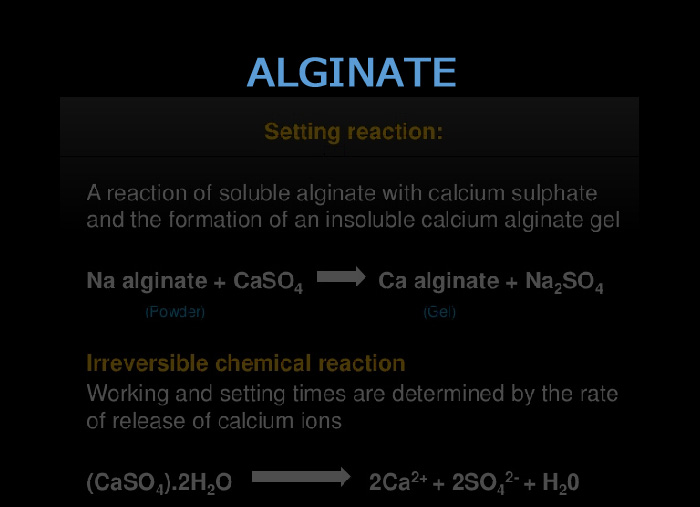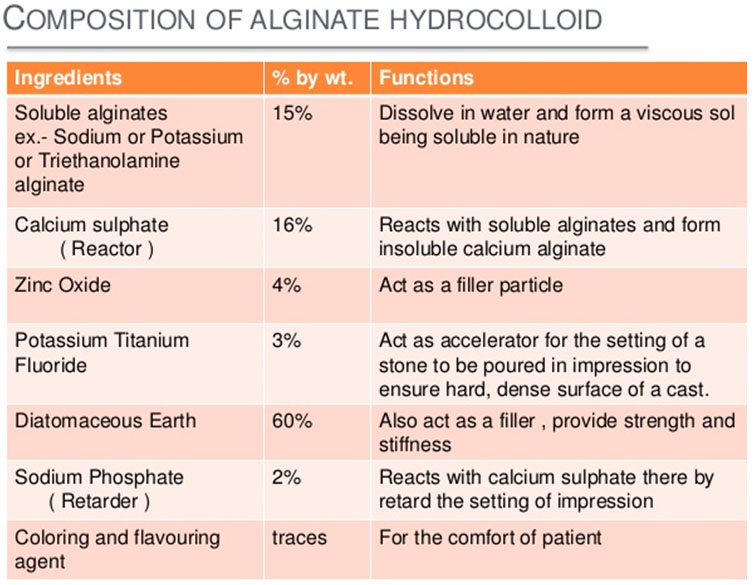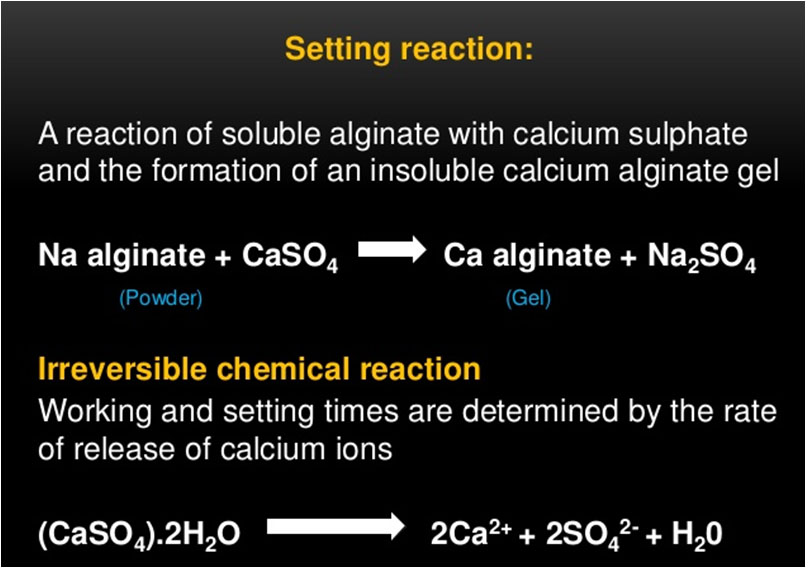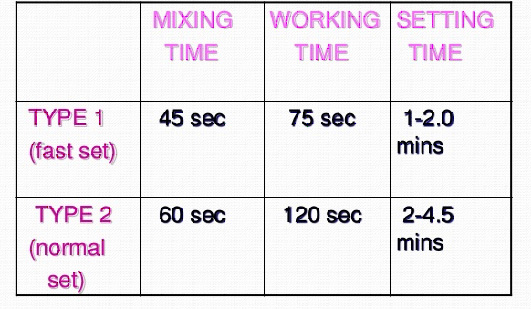- NEED HELP? CALL US NOW
- +919995411505
- [email protected]
Alginate

Alginate was developed as a substitute for agar when it became scare due to world war II. Currently alginate is more popular than agar for dental impressions, because it is simpler to use. Alginate is perhaps the most widely used impression material in the world.
Type I - Fast setting
Type II - Normal setting
APPLICATIONS:
* In mouths with excessive flow of saliva
* For partial dentures with clasps

SETTING REACTION


PROPERTIES OF ALGINATE HYDROCOLLOID

ADVANTAGES:
DISADVANTAGE
Type I - Fast setting
Type II - Normal setting
APPLICATIONS:
- It is used for impression making
* In mouths with excessive flow of saliva
* For partial dentures with clasps
- For making preliminary impressions for complete dentures
- For impressions to make study models and working casts
- For duplicating models

SETTING REACTION


PROPERTIES OF ALGINATE HYDROCOLLOID
- Taste and odor
- Flexibility
- Elasticity and elastic recovery
- Reproduction of tissue detail
- Strength
- Syneresis and imbibition
- Dimensional stability
- Biological properties
- Adhesion

ADVANTAGES:
- It is easy to mix and manipulate
- Minimum requirement of equipment
- Flexibility of the set impression
- Accuracy if properly handled
- Low cost
- Comfortable to the patient
- It is hygienic
- It gives a good surface detail even in presence of saliva
DISADVANTAGE
- Cannot be electroplated so metal dies are not possible
- It cannot be corrected
- Distoration may occur without it being obvious if the material is not held while it is setting
- Poor dimensional stability
- Poor tear strength
Related posts
April 10, 2025
April 9, 2025
April 4, 2025




